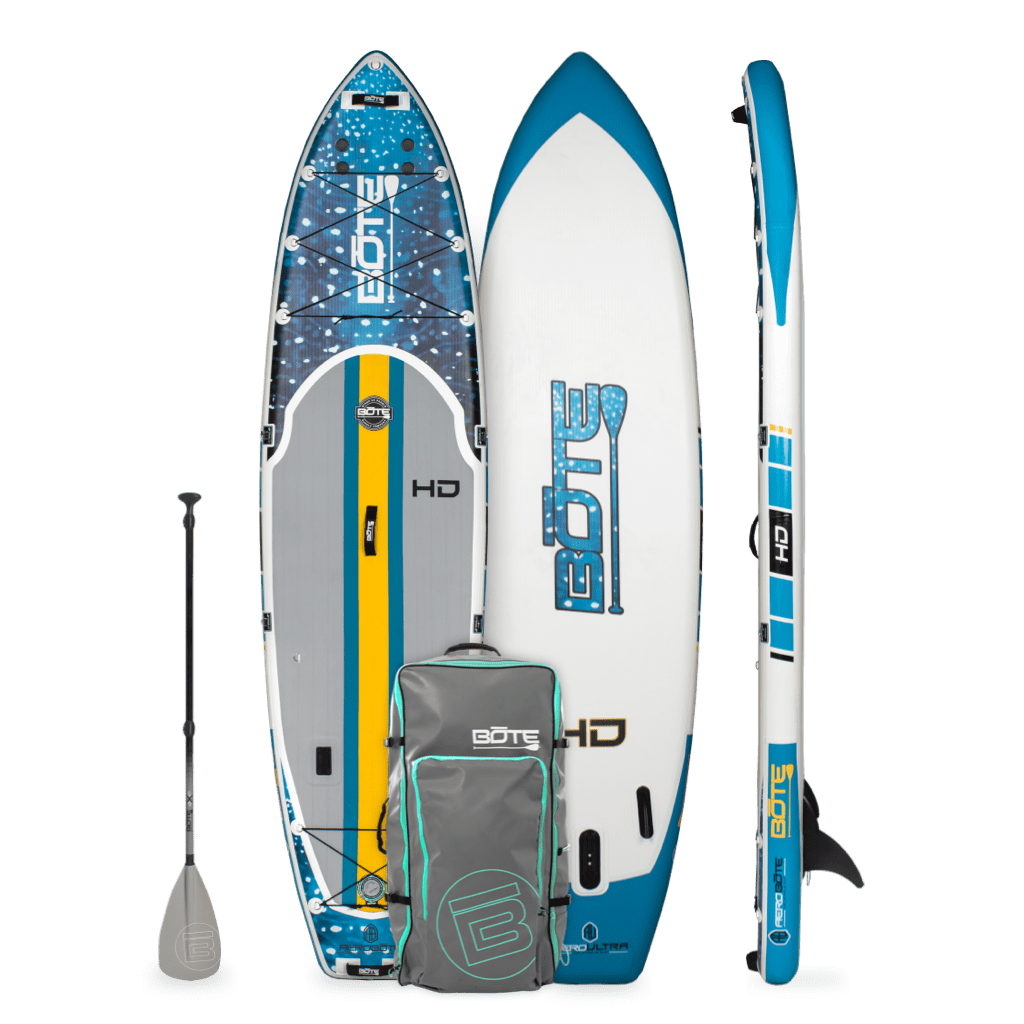HD Aero 11′6″ Native Whale Shark Inflatable Paddle Board | Inflatable SUP | BOTE
It’s all about the lifestyle… and the HD Aero 11’6″ Native Whale Shark embodies it. If you’re looking for the all-purpose feature set of the Gatorshell HD, but want the convenience and portability to take your board just about anywhere a suitcase fits – the HD Aero has you covered.
APEX OF INNOVATION
PERFECT FOR THESE SKILL LEVELS
BEGINNER INTERMEDIATE ADVANCED
If you’re looking for the all-purpose feature set of the Gatorshell HD, but want the convenience and portability to take your board just about anywhere a suitcase fits – the HD Aero 11’6″ Native Whale Shark Inflatable Paddle Board has you covered.
SUPREME VERSATILITY
The HD was crafted to be the “do everything” board. With an entry rocker, wide base, and compatibility with BOTE rac systems this board is ready for any adventure.
FAMILY FRIENDLY
The HD Aero has all the essentials to give you and your family a fun day out on the water with all the style that comes with owning a BOTE.
ANY WATERWAY, ANY DAY
The engineering of the entry rocker coupled with the width of the HD Aero make it extremely stable in all water conditions.
MADE WITH AEROBOTE
Constructed with our Aero Technology™ to ensure peak rigidity and performance.
TOUGH AS NAILS
The military-grade PVC skin means AeroBOTEs can withstand being tossed around, banged, bumped, and scraped with low risk of damage or permanent blemish.
LIGHTWEIGHT & PORTABLE
AeroBOTE construction allows BOTE inflatable paddle boards to transform from backpack-size into a fully functional SUP in minutes, allowing for superior ease of transportation and storage.
Additional information
| Dimensions | 11′6″ L × 34″ W × 6″ D |
|---|---|
| Capacity | 315 LBS |
| Avg. Weight | 30 LBS |
| Travel Bag Dimensions | 36″ L × 17″ W × 13″ D |
| Loaded Bag Weight | 48 LBS |






by Chad
Everything I expected. Quality and craftsmanship are impeccable.
by Nicole
This Bote is incredible, I can’t even tell I’m on an inflatable. I was initially resistant to a inflatable, but due to roof rack restrictions I decided to try one, and am so glad I did!
by Chris
I am absolutely in love with my new board! It s not only beautiful but super easy to unload and inflate!! I can not wait for the warmer weather to get this beauty on the water!!
by Tyler
This board is a perfect addition to my hard hd bote. Could not ask for anything more out of a blow up board. Was super hard and did not mind switching between the hard or inflated board.
by Jandro
Beautiful board, its amazing. I have a solid board and this inflatable is just as awesome.